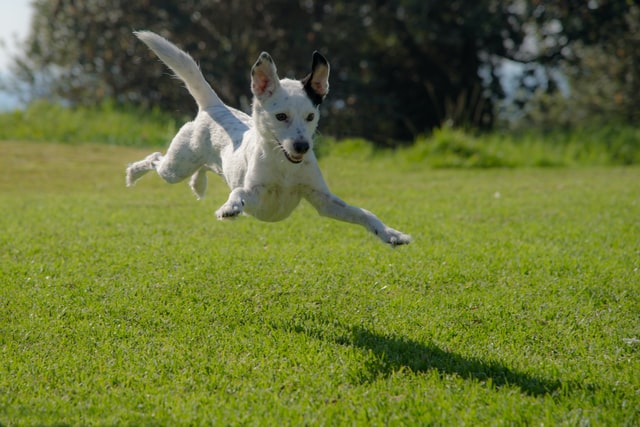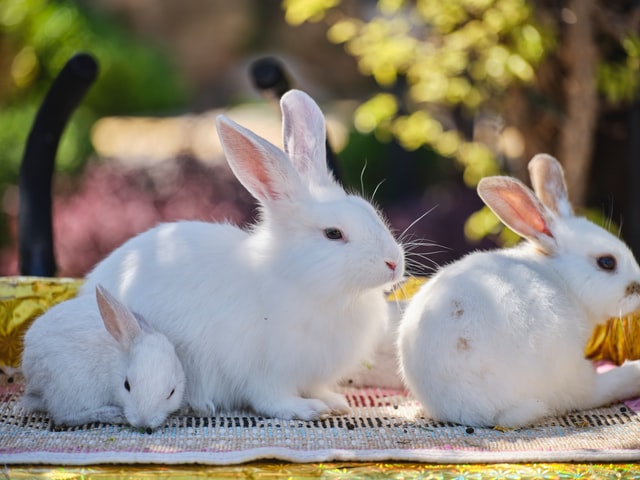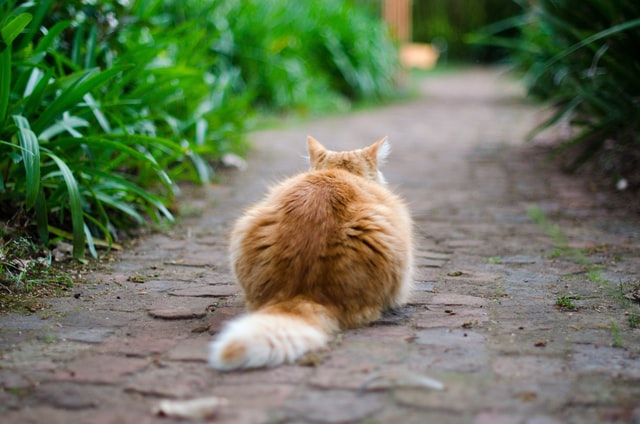When you get a new pet that can be let outside or move to a new home, consider how to create a pet friendly garden.
This could mean changing or adapting the garden you already have. Or thinking ahead when you plan your garden, knowing a pet is on the way or needs consideration.
Here we will explain how to ensure your garden is ready for your pet.
Only Allow Pet-Friendly Plants
If you already have a plant-filled garden, you need to consider how your pet will react to the pollen and toxic natural chemicals in their biology. A common question that gets asked is “are hostas poisonous to dogs?” as this beautiful green and white plant is a common favourite as a background filler.
Unfortunately, the answer is yes. Hostas are very toxic to dogs, as they can cause diarrhoea and vomiting when eaten.
There is a common misconception that animals know what they can and can’t eat, so “let them do what they want”, but there are many exotic plants that don’t belong to your dog’s natural habitat. This means we cannot trust their natural instincts.
If you already have a garden filled with plants, search to find if each one is safe and be aware of common toxic plants.
If you are planning on adding flowers to the garden, search if the plant is safe for your specific pet. Bunnies, dogs, horses, and cats will all have their own list of toxic foliage.
Make Sure The Area Is Safe
A pet friendly garden is, crucially, a safe garden. Depending on the type of pet you have, the enclosed area will need different measurements to keep it safe. For example, a rabbit would need an outdoor grazing area of at least 3 meters by 2 meters, and 1 meter high.
That’s roughly 10 feet, by 6.5 feet and 3 feet high.
They also need an indoor area that can give them shade, bedding, and warmth.
For dogs, you often need a large area, which has fencing. This will stop your dog from running away or getting lost. When adding in a barrier, consider the ease of escape. If your pet loves to dig, it might be worth creating a barrier that goes a couple of feet underground as well as over-ground.
For cats, you need to consider if they can leave your garden or not. If you want them to stay enclosed in your protected space, consider installing cat fence brackets. They curl over your fences, making it impossible for your cat to jump over them. It’s always a good idea to micro chip free roaming cats.
Declutter & Organise Your Outside Space
Ensure there are no choke hazards, sharp edges or toxic materials around. If you’re lucky enough to have a garage, shed or outbuilding that’s ideal. Within this, you can choose free standing or built in shelving, wall hooks and peg boards to save space. Gardening products like weed killer can be boxed away and tools put out of reach. If you’re short on space, there are some useful large outdoor storage boxes available. Consider slimline storage sheds and wall mounted storage units too. So you can still easily tidy away children’s toys, bicycle accessories and table wear.
If you use a BBQ, consider keeping your pet away completely when in use or create a barrier with a screen put your dog in a crate (downwind from any fumes). That way, it can still be outdoors with you but safe. Use wall space high out of reach to hang BBQ utensils. Remember that dogs in particular have been harmed by chewing up skewers, tin foil and matches. To solve these risk issues, you can build or buy lockable storage containers that fit around your BBQ.
The materials you choose can make it easier to keep things tidy. Gravel gets kicked up by dogs and cats so consider decking or resin areas. If your dog is a digger, consider a digging zone! You could train them to dig in a small allocated area and even bury interesting toys there to make it exciting.
An outside tap in the garden is a great idea so you can hose down your dog after a muddy walk (or digging session!). And keep an attractive pot or container outside that you can keep filling with water for your pet to drink.
Give Them The Chance To Run
If you only want your pet to explore a small portion of your outside area, make sure that there is still enough space for them to run around.
For dogs, a garden should be their main running area. This means they should have enough space to play even if you don’t have time to take them for a walk. The size of the dog will tell you the amount of space they need, as some pooches are happy in just an apartment.
Secondly, you need to make sure the ground is suitable for your pet to play on. Grass is normally the best choice, but pavements will keep your pet’s feet protected too.
Gravel isn’t a choice you should consider, as it will be hard to clean up any poop and it can get stuck in between your pet’s toes. Depending on your pet’s personality type, they may even consider eating the gravel. Ideally, all gravel should be removed, but if that isn’t possible, try to limit it as much as possible.
Consider A “No-Dig” Design
“No-Dig” gardens are gardens that are mostly made up of paving, tiles, or concrete. Instead of growing plants in the ground, people grow their foliage in pots or raised flower beds.
Animals such as cats and dogs, who love to dig up your newly planted garden, will find it harder to destroy all of your hard work.
There are other reasons to choose a no-dig garden too. For example, it can be easy to redecorate your garden simply by moving your pots around. It will be easier to change the soil when needed, too. And most importantly, you will have complete control over what goes in your garden, as weeds will find it harder to reach the beds.
Summary
The best way to create a pet friendly garden is to consider what is toxic to your pet, how much space they need to play around, the type of ground that is safe for them, and how to protect your plants.
For more related tips, check out our blog on pet friendly decor ideas. Craig, our London Professional Organiser, offers a pet friendly specialist service if you want to organise any area of your home, work or outside space with your pet in mind. A Tidy Mind cover most of the UK, so get in touch for a chat with one of our organisers or take a look at our decluttering and organising packages.



